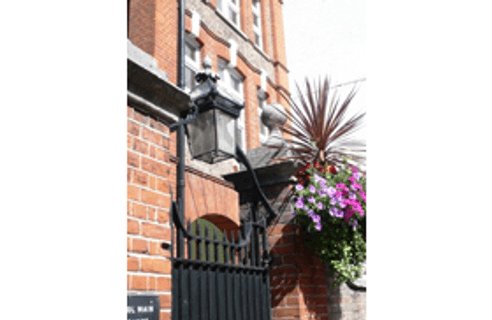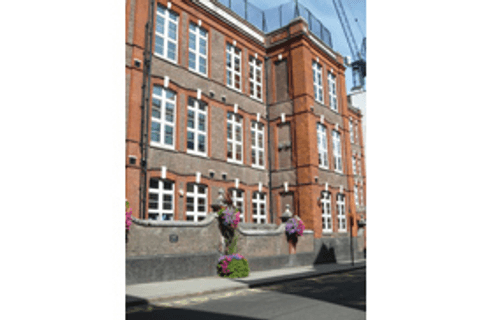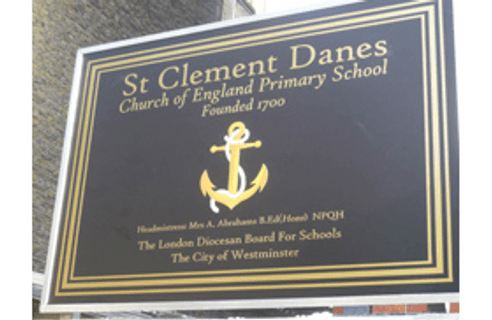Headteacher
St Clement Danes Church of England Primary School
Westminster
- Expired
- Salary:
- £61,798-£69,750 (L15-21)
- Job type:
- Full Time, Permanent
- Start date:
- September 2016
- Apply by:
- 11 March 2016
Job overview
St Clement Danes Church of England Primary School has been at the heart of Westminster since 1700. Today we are a busy one-form entry, voluntary-aided school educating 235 pupils from our diverse local community. We are looking for an inspiring, energetic and innovative Headteacher who will lead, nurture and develop our school, build on its outstanding reputation, and guide it into the next exciting chapter of its history.
We are a hardworking, friendly and high-achieving school with a distinct but inclusive Christian ethos. We have a strong culture of courtesy and mutual respect coupled with a genuine sense of fun. Our teachers have an unwavering commitment to help each and every child to reach their full potential; they have worked tirelessly to enable the school to evolve and expand in recent years. The school is overseen by an effective and dedicated governing body.
Our governors are searching for a Headteacher who will:
- actively support the school’s Christian values whilst also cherishing the diversity of the whole school and its place in the wider community;
- recognise the need for continuity where appropriate; but also treat our outstanding school as setting a constant challenge for yet further improvement;
- maintain and drive upwards our high standards of achievement and behaviour;
- get the best out of each and every child.
St Clement Danes is committed to safeguarding and promoting the welfare of children and expects all staff and volunteers to share this commitment.
Successful applicants will be expected to complete an enhanced DBS check and to disclose any information relevant to Disqualification by Association.
Our pupils and their parents are hoping for a Headteacher who will:
- inspire them, inspire their love of learning, and act as a role model for the school’s Christian ethos;
- maintain our happy, calm, purposeful and self-disciplined culture;
- encourage and celebrate the children’s creativity and help them to develop a confidence and sense of self-worth that will equip them for the challenges of adult life.
Our teachers, teaching assistants and support staff are looking for a leader who will:
- inspire confidence;
- nurture a sense of cohesion and unity;
- reinforce our vision;
- motivate and mentor the next generation of leaders for the school.
Early applications are welcome, and visits to the school positively encouraged. An application pack can be download from our website:
http://st-clementdanes.westminster.sch.uk/news/vacancy
To book a school visit please contact Deb Starkey, Clerk to the Governors on 020 7641 6586 or email on dstarkey@stcd.co.uk
Closing Date: Friday, 11th March 2016 at noon
Interview Date: Monday, 21st March 2016
About St Clement Danes Church of England Primary School
- St Clement Danes Church of England Primary School
- Drury Lane, Covent Garden
- London
- WC2B 5SU
- United Kingdom
The origins of St Clement Danes School go back to the turn of the seventeenth and eighteenth centuries. Records show that there had been a school operating in the parish of St Clement Danes as early as 1666, although we know virtually nothing about it. Probably it consisted of no more than a handful of students and one schoolmaster. By the late 1690s, a new initiative had been established by the Society for the Promulgation of Christian Knowledge for establishing charity schools throughout the country. Hundreds were founded and within the first eight years, there were 69 schools in the London area with over 3000 children attending. One of the earliest and largest of these was at St Clement Danes.
A committee was formed in October 1699 and a school for boys aged between 9 and 14 was opened on 13 January 1701. A girls’ school followed on 9 July 1702. Both these schools were housed in buildings adjoining the parish graveyard in Portugal Street. And from 1724, there was an Infant School, known as the Horn Book School, included in the foundation. From the first day, the uniform was blue and this colour has been preserved through the generations to our own time.
The schools were then situated in Portugal Street next to the parish burial ground. For the first ten years the boys’ and girls’ schools were looked after by John Durrant and his wife, who were Master and Mistress of the two schools; this couple both died in 1710, very probably victims of an illness brought into the schools by the children.
In 1703, the schools took part in the first annual gathering of the charity schools of London, then at St Andrew’s Holborn and in later years at St Paul’s Cathedral. These services, which were a major event in the London calendar, continued until 1877. The children walked to the cathedral preceded by the School Treasurer carrying a silver staff and this same staff is carried today, at the annual Oranges and Lemons Service.
A small section of the boys were trained in navigation and were intended for a career at sea. Throughout their time at the school, they were trained in mathematics and trigonometry, for they were intended to form future generations of master mariners as Britain’s trade and territory expanded overseas.
In their earliest years, the schools were associated with the High Church/ High Tory politics of Queen Anne’s reign and it is recorded that they displayed sympathies for the Jacobite cause during the Uprising of 1715. The schools had begun as an inspired move to turn the children of the poor into model members of Society. Very quickly, they became a means of providing a free and good education to the children of local householders, or of the servants of the richest inhabitants – not quite what the founders had in mind. In later years, the optimistic vision of the founders, in transforming street urchins into respectable citizens was replaced by a more mundane object of preparing the children for a life as servants in the houses of their social betters.
In the eighteenth century, the schools were open from 7 in the morning until noon and again from 1 until 5pm or whenever daylight ran out, for there was no question of wasting money on expensive candles to light the school. To allow for some relief from work, the schools closed early at 3pm on Thursdays and at noon on Saturdays. And, of course, the schoolchildren reassembled in uniform to attend Morning and Afternoon services in St Clement’s church each Sunday.
The only relief from a constant round of copying or sewing were holidays, then only a few days a year. The greatest of these was New Year's Day, in those days far more prominent than Christmas, and on this day all the children were treated to a special dinner. In 1703, it is recorded that the dinner cost £3 7s 41/2d and that trenchers (i.e. plates) and salts were bought for their use at a cost of 8s 6d. In 1737, we find that the children were given a treat at Easter of plum cakes, rolls, cheese and beer. Though it may seem odd to give the children beer, in days when the water supply could not be trusted, beer was the staple drink of all people as the brewing process would have killed off most of the germs and disguised the taste of the water used in it. Eighteenth century beer was, in any case, far weaker than modern beers so we should not be surprised to read that on occasions the children polished off several pints each.
In 1778 an innovation was made whereby eight girls were to be housed and maintained in the school from the age of 9 “till they reached an age fitted for servitude” at 16. This meant that for seven years they only left the school buildings for their weekly attendance at church. Parents were allowed to visit on for one hour every 3 weeks. Any attempt by the parents to make contact with their children as they walked to church was strictly forbidden and punishable by expulsion.
Over the years, the school has reinvented itself several times over. The original charity schools began to run out of steam at the beginning of the nineteenth century and merged with a new and larger institution, a school founded under the auspices of the Church of England’s National Society.
From 1821, the schools had well over 400 pupils, of which about 60, known as “The Clothed Establishment”, retained the identity of the charity schools as a school within a school. During the nineteenth century, the parish schools absorbed other schools in the locality, a Ragged School in Clare Market and an Infant School in Milford Lane among them, but by the 1870s it was no longer possible to run a sizeable school from subscriptions, bequests and charity sermons. From the middle of the century, the schools had started receiving Government grants and these expanded until the schools became entirely dependent on them. The inevitable conclusion was that the schools should move to being entirely state-funded. Following a new Charity Commissioners’ Scheme of 1875, the charity schools were remodelled into Elementary schools for children aged between 4 and 14. There were still three distinct schools, for boys, girls and infants. To this day the inscriptions over the separate entrances to the present building record how the schools were kept entirely distinct. A merger to form one united school only took place in 1926.
The extensive rebuilding which took place in the parish in the late nineteenth century led to several moves being undertaken before the schools moved into the present premises in 1907. The school was expanded in 1928 with a new wing housing the Housewifery Centre but by the 1930s, numbers on the roll started declining as families moved out of the cramped City centre to housing estates in the suburbs. There was much discussion of merger or closure but the only brief period when the school was actually closed was after the evacuation of the children in 1939. After the worst of the Blitz had passed, children began to drift back to London and a skeleton school, teaching all ages in one class, re-opened in early 1941. By 1942, the roll was back to 212.
A full re-opening of the school took place in 1948; now it became a Mixed Junior and Infants School, taking children only up to the age of 11. This is the formula that has continued to the present day.
Please note that you are wholly responsible for fact checking in respect of the information provided by schools. Please also check for the latest visa and work permit requirements that may apply. Tes is not responsible for the content of advertisements or the policies adopted by advertising schools. Tes asks that all schools follow Tes' Fair Recruitment Policy.




